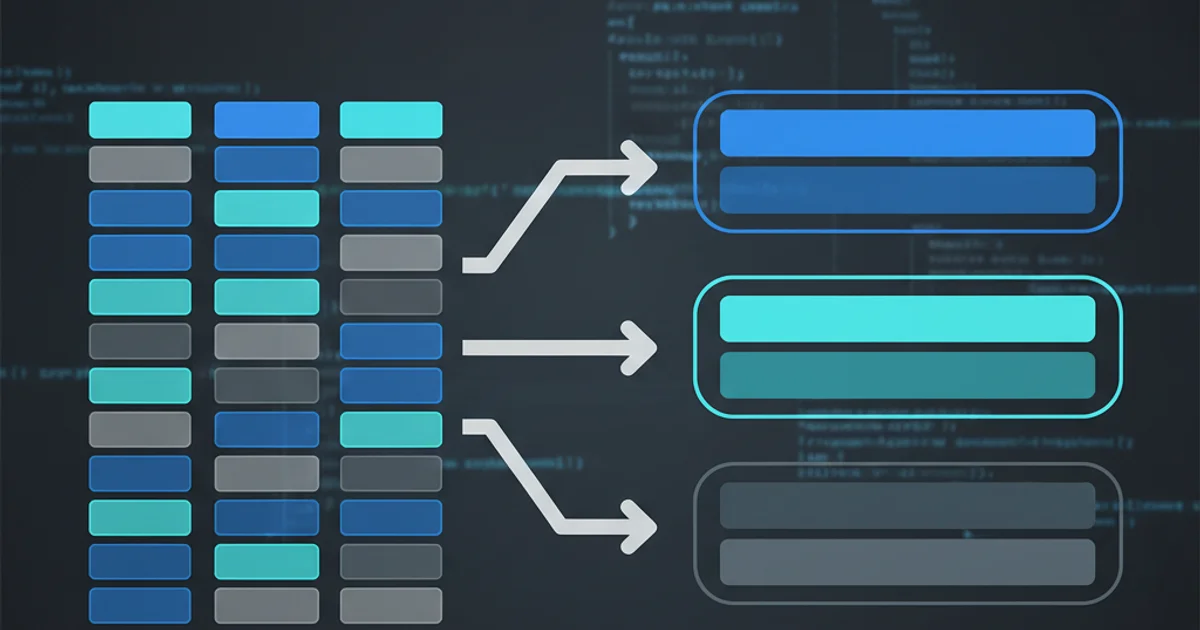Understanding the map function
Categories:
Mastering Python's map() Function: A Comprehensive Guide

Explore the map() function in Python, a powerful tool for applying a function to all items in an iterable without explicit loops. Learn its syntax, use cases, and how it compares to list comprehensions.
Python's map() function is a built-in higher-order function that provides a concise and often efficient way to apply a given function to each item of an iterable (like a list, tuple, or string) and return an iterator that yields the results. It's a fundamental concept in functional programming paradigms and is widely used for data transformation tasks.
What is map() and How Does it Work?
The map() function takes two primary arguments: a function and one or more iterables. It applies the function to each item of the iterable(s) in parallel. The result is a map object, which is an iterator. This means it computes values lazily, only when they are requested, which can be memory-efficient for large datasets. To get the actual results, you typically convert the map object to a list, tuple, or other collection type.
def square(number):
return number * number
numbers = [1, 2, 3, 4, 5]
# Using map() to apply the square function
squared_numbers_map = map(square, numbers)
# Convert the map object to a list to see the results
squared_numbers_list = list(squared_numbers_map)
print(f"Original numbers: {numbers}")
print(f"Squared numbers (map object): {squared_numbers_map}")
print(f"Squared numbers (list): {squared_numbers_list}")
Basic usage of map() with a custom function and a list.
flowchart TD
A[Start]
B["Input Iterable (e.g., [1, 2, 3])"]
C["Function (e.g., square())"]
D{"Apply Function to Each Item"}
E["Output Iterator (map object)"]
F["Convert to List/Tuple (Optional)"]
G["Final Result (e.g., [1, 4, 9])"]
A --> B
B --> D
C --> D
D --> E
E --> F
F --> GWorkflow of the map() function
Advanced Use Cases and Multiple Iterables
The map() function isn't limited to a single iterable. If you provide multiple iterables, the function you pass to map() must accept an equal number of arguments. map() will then take corresponding items from each iterable and pass them as arguments to the function. It stops when the shortest iterable is exhausted.
def add(x, y):
return x + y
list1 = [1, 2, 3]
list2 = [10, 20, 30]
# Adding corresponding elements from two lists
sum_result = list(map(add, list1, list2))
print(f"Sum of corresponding elements: {sum_result}")
# Using lambda with multiple iterables
names = ['Alice', 'Bob', 'Charlie']
ages = [30, 24, 35]
combined_info = list(map(lambda name, age: f"{name} is {age} years old", names, ages))
print(f"Combined info: {combined_info}")
Using map() with multiple iterables and lambda functions.
lambda functions are often used with map() to keep the code concise and avoid defining a separate function.Comparison with List Comprehensions
While map() is powerful, Python also offers list comprehensions, which can achieve similar results. List comprehensions are often considered more 'Pythonic' for simple transformations and filtering, as they can be more readable. However, map() can be more efficient for very large datasets or when working with existing functions, especially those from external libraries.
# Using map()
def double(x):
return x * 2
numbers = [1, 2, 3, 4, 5]
mapped_doubled = list(map(double, numbers))
print(f"Doubled using map(): {mapped_doubled}")
# Using list comprehension
comprehension_doubled = [x * 2 for x in numbers]
print(f"Doubled using list comprehension: {comprehension_doubled}")
# Filtering with map() (less direct)
filtered_map = list(filter(lambda x: x % 2 == 0, numbers))
print(f"Filtered even numbers (map/filter): {filtered_map}")
# Filtering with list comprehension
filtered_comprehension = [x for x in numbers if x % 2 == 0]
print(f"Filtered even numbers (list comprehension): {filtered_comprehension}")
Comparing map() with list comprehensions for transformation and filtering.
map() when you need to apply a function to every item in an iterable, especially if the function already exists or if you're dealing with multiple iterables. Opt for list comprehensions when the transformation is simple, involves filtering, or when readability is paramount for straightforward cases.